|
Now that we have a testable version of Eliza and one that supports synonyms,
it's time to add all the remaining patterns, synonyms and decomposition/reassembly
rules. As we do this, we'll also add or update the corresponding pattern tests
so that our test app is up to date.
It's important that your tests mirror your current code. If you add new
functionality but don't write corresponding tests, be prepared for sleepless
nights.
The generic response patternThe first pattern in Eliza's script is the one that causes Eliza to respond with a generic response when it can't map the user's input to a pattern. The current version of Eliza just displays this string when it encounters user input it can't "understand". Eliza's script requires us to cycle through four generic responses.
Eliza's script requires us to cycle through four generic responses.
 We'll implement this by creating a generic response format-free pattern.
We'll implement this by creating a generic response format-free pattern.
 And a corresponding test (so we can continue to sleep at night).
And a corresponding test (so we can continue to sleep at night).
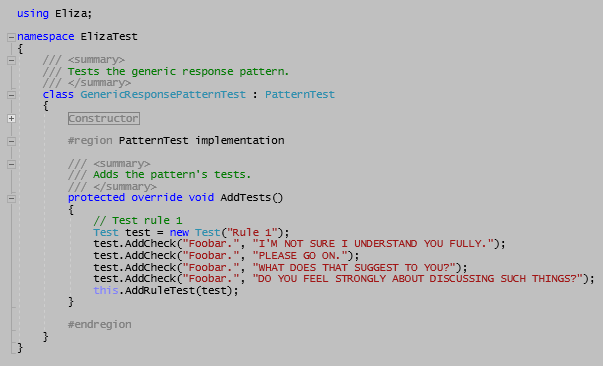 We'll need to modify Eliza so it uses the generic response pattern if it
can't find another.
We'll need to modify Eliza so it uses the generic response pattern if it
can't find another.
 A manual test confirms our generic response pattern works as expected.
But you should also run ElizaTest to confirm the pattern's test succeeds.
A manual test confirms our generic response pattern works as expected.
But you should also run ElizaTest to confirm the pattern's test succeeds.

Adding all synonymsNow it's time to add the remaining synonyms. We'll do this in a separate method called InitializeSynonyms() and call that from Eliza's Initialize() method.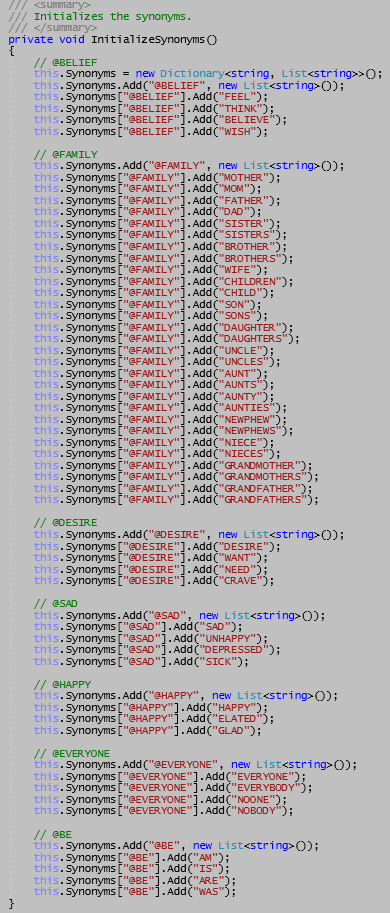
Adding all patternsAfter adding all the synonyms, we can go ahead an add the remaining patterns and update existing patterns that referred to synonyms.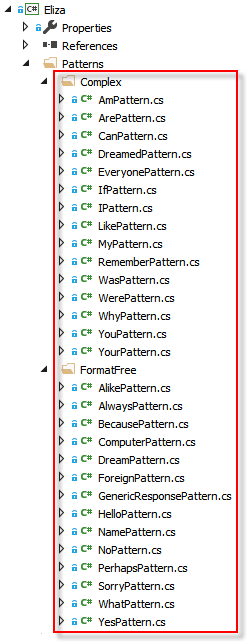 And because we like to sleep well at night, we'll add and update the corresponding
pattern tests to ensure we have 100% test coverage for every response for every
pattern.
And because we like to sleep well at night, we'll add and update the corresponding
pattern tests to ensure we have 100% test coverage for every response for every
pattern.
 The test run confirms all patterns behave correctly.
The test run confirms all patterns behave correctly.

Tweaking the pattern selection logicIf you run Eliza and tell give it the input "I like chocolate.", it responds with a null response. Why is this happening? Without adding some logging statements that tell us
what Eliza is doing, it's impossible to say. So let's uncomment the Console.WriteLine()
lines in the method Eliza.FindMatchingPatternForInput() and rerun Eliza with this input.
Why is this happening? Without adding some logging statements that tell us
what Eliza is doing, it's impossible to say. So let's uncomment the Console.WriteLine()
lines in the method Eliza.FindMatchingPatternForInput() and rerun Eliza with this input.
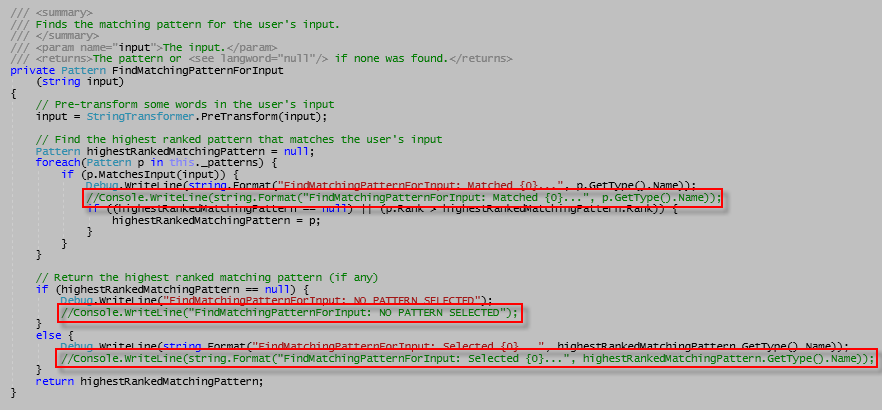 We can now see what's going on.
We can now see what's going on.
 Both IPattern and LikePattern match the input, but LikePattern is selected to
generate a response because its rank (10) is higher than that of IPattern (zero).
Unfortunately, LikePattern doesn't have a decomposition/reassembly rule that
can handle the input and therefore returns a null response.
There are 2 things we need to change:
Both IPattern and LikePattern match the input, but LikePattern is selected to
generate a response because its rank (10) is higher than that of IPattern (zero).
Unfortunately, LikePattern doesn't have a decomposition/reassembly rule that
can handle the input and therefore returns a null response.
There are 2 things we need to change:
 After doing (2), Eliza's response is:
After doing (2), Eliza's response is:

Where we've come
Congratulations on following Eliza's journey so far!
Eliza is a far cry from its initial version in which it simply echoed the user's
input like a parrot.
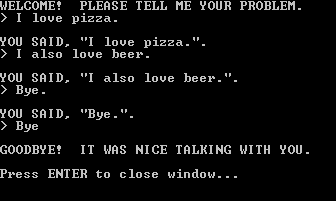 It's now able to engage in what appears to be a somewhat "intelligent" (albeit stilted)
conversation.
It's now able to engage in what appears to be a somewhat "intelligent" (albeit stilted)
conversation.
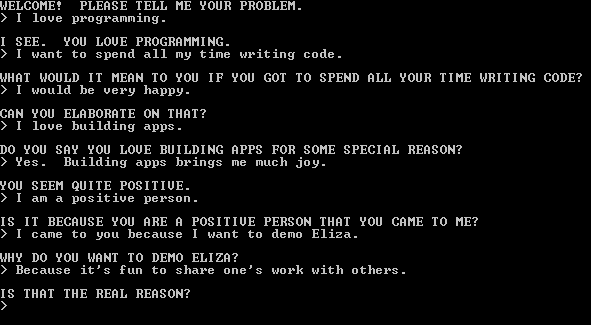
Next stepsEliza is looking very close to Joseph Weizenbaum's creation. Next, we'll improve upon Eliza's generic response generator and add a few other goodies! |